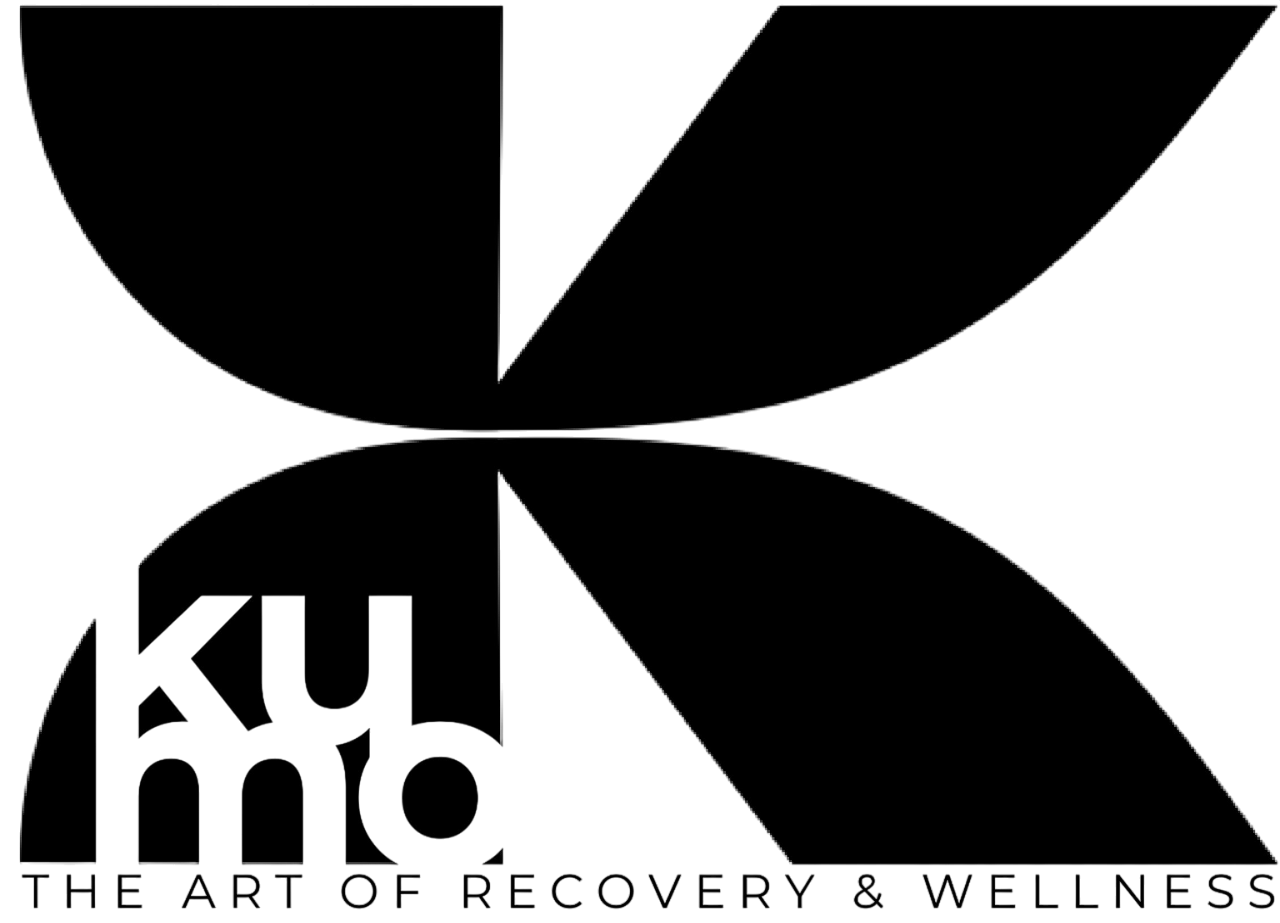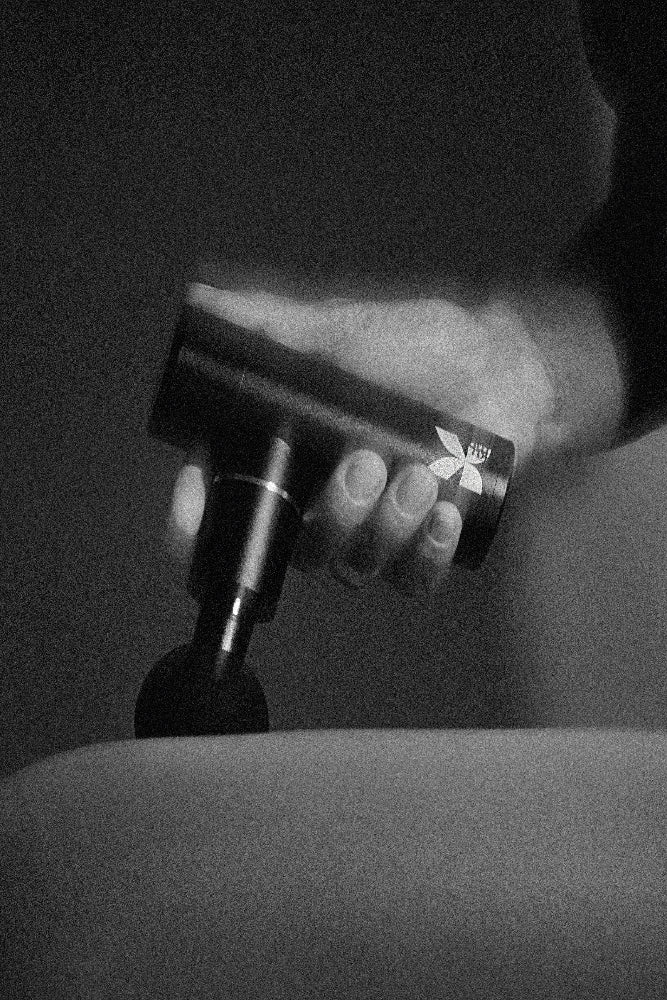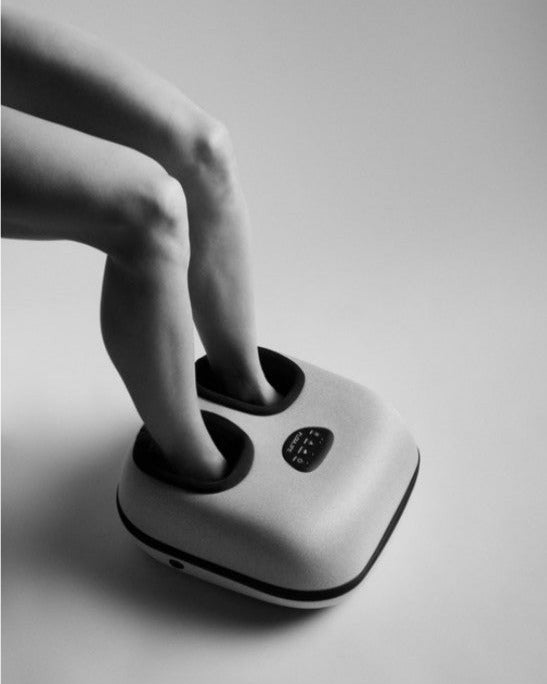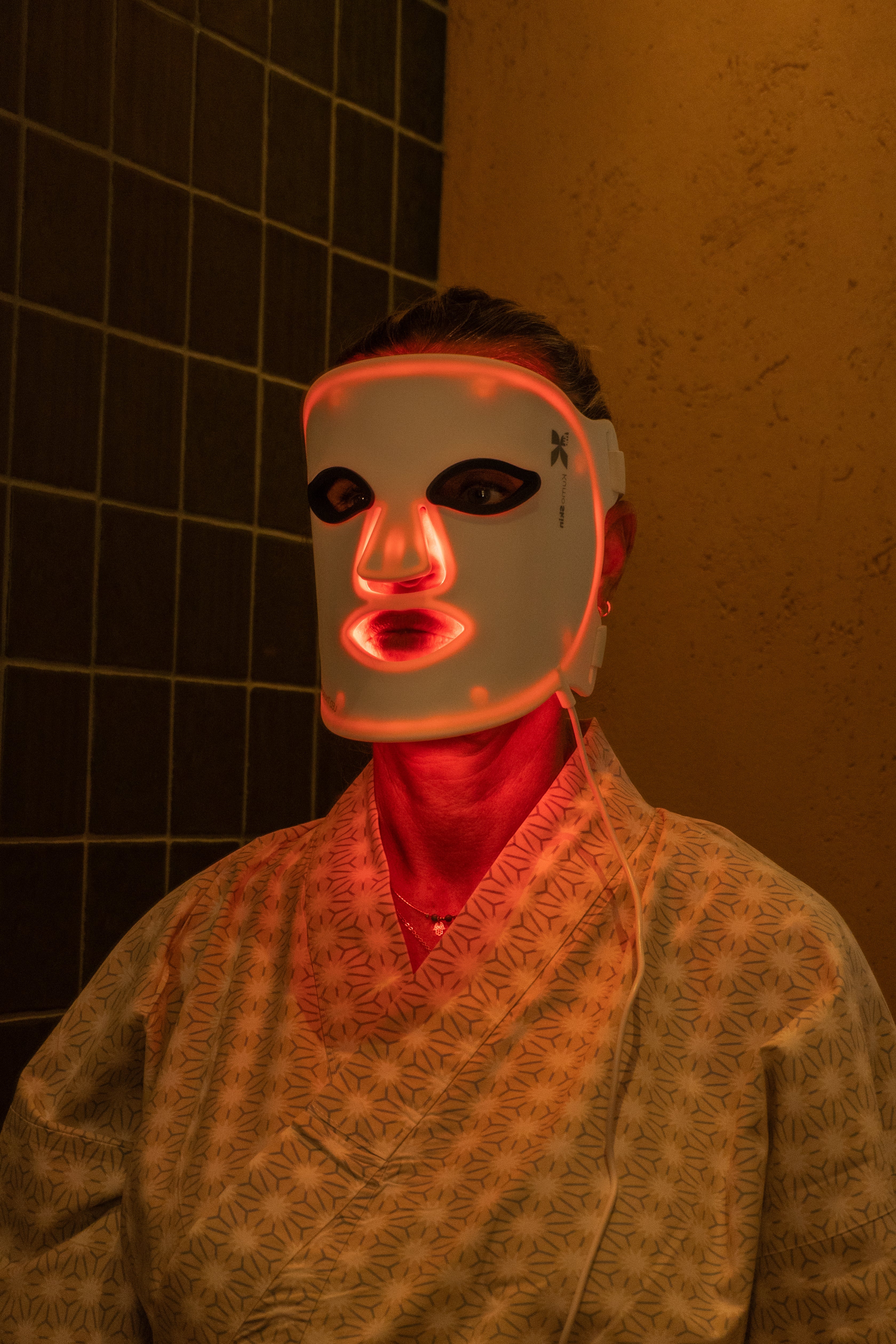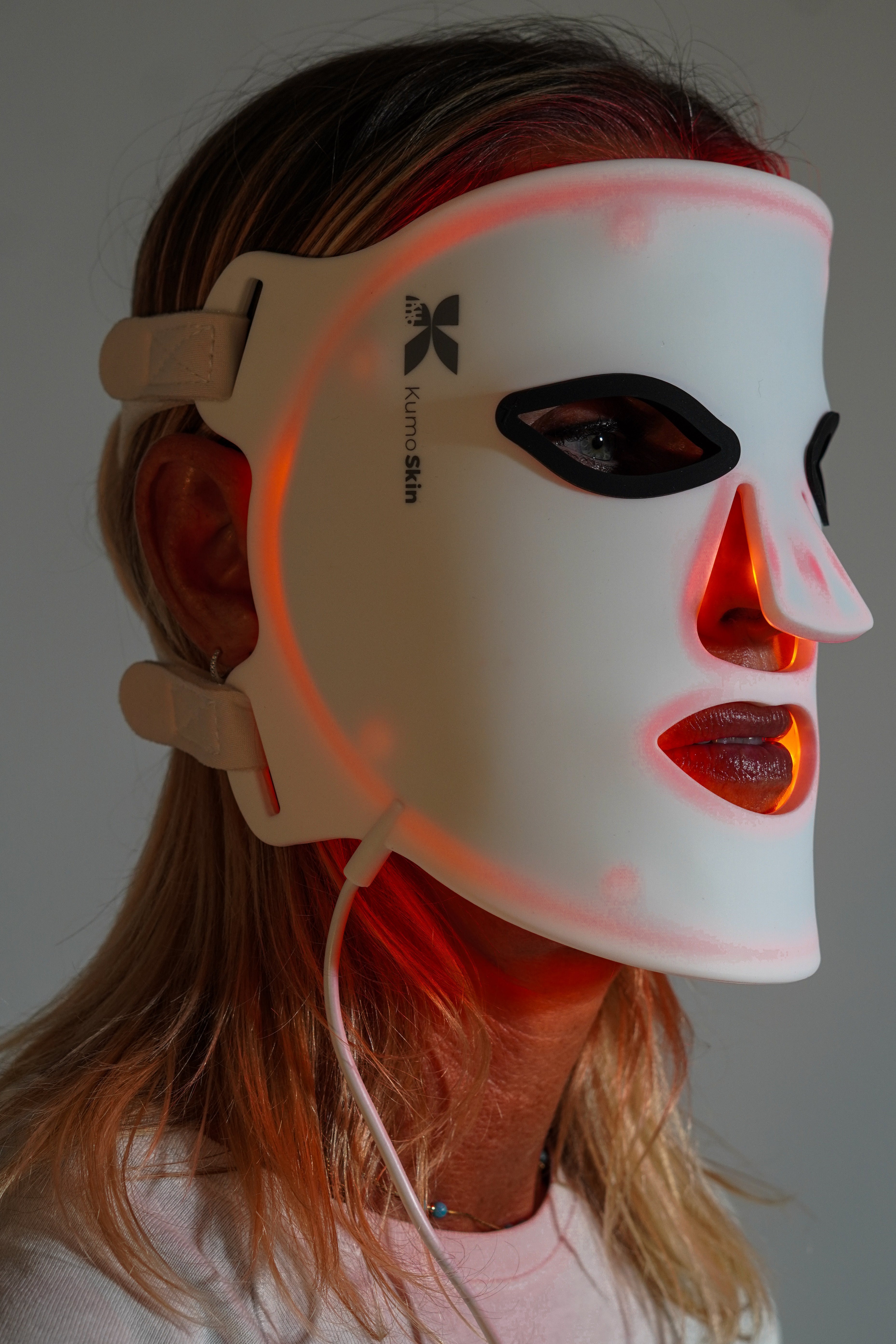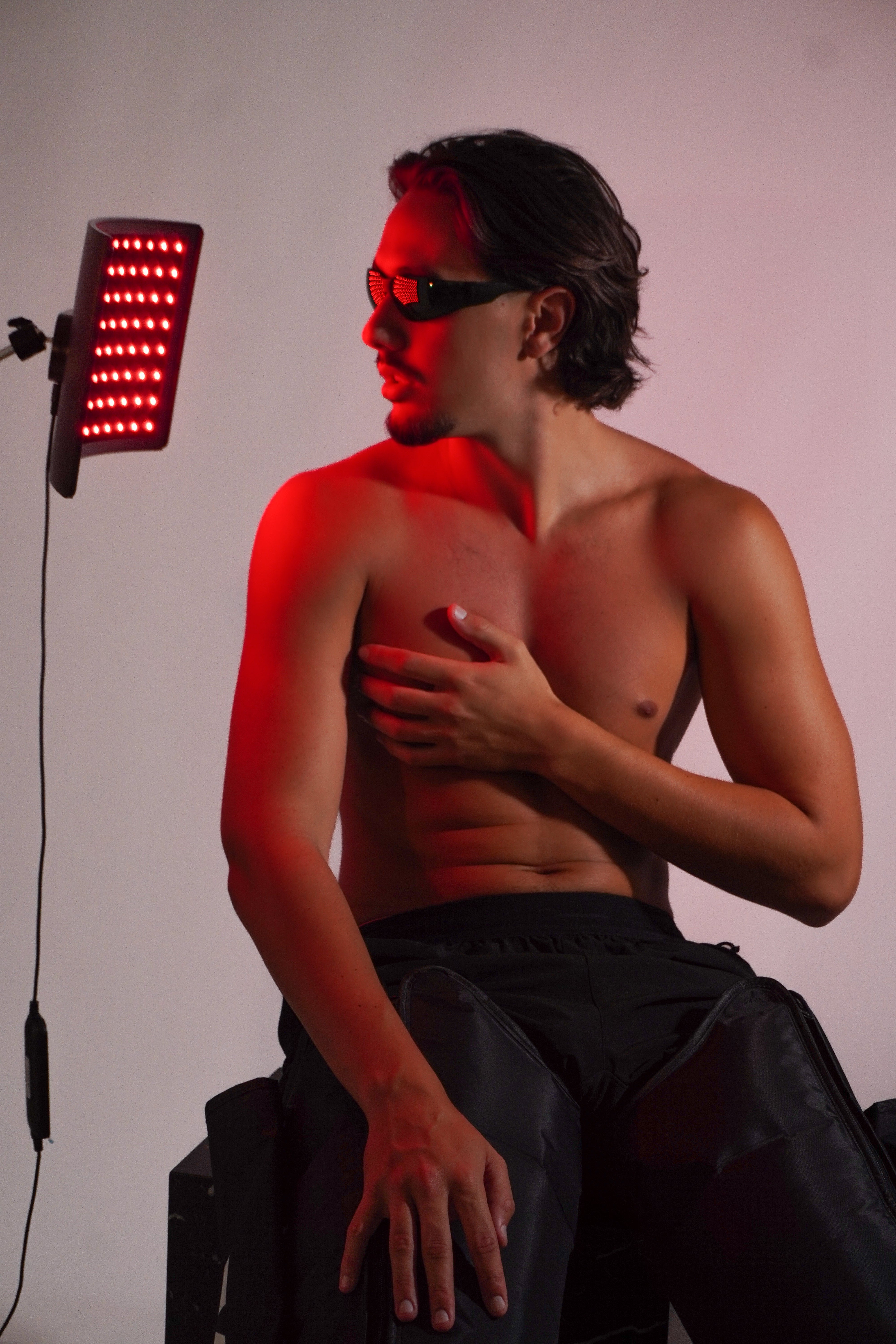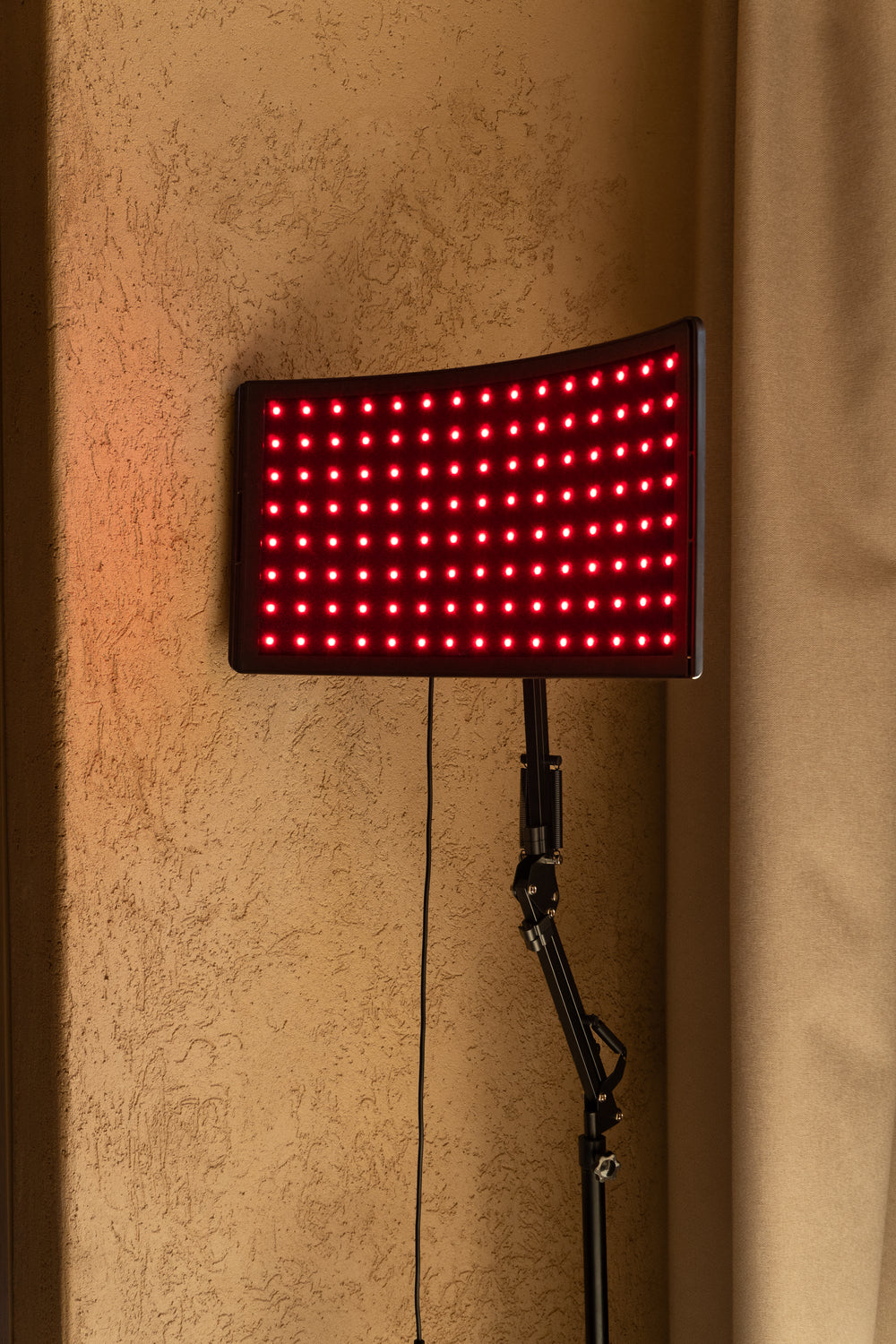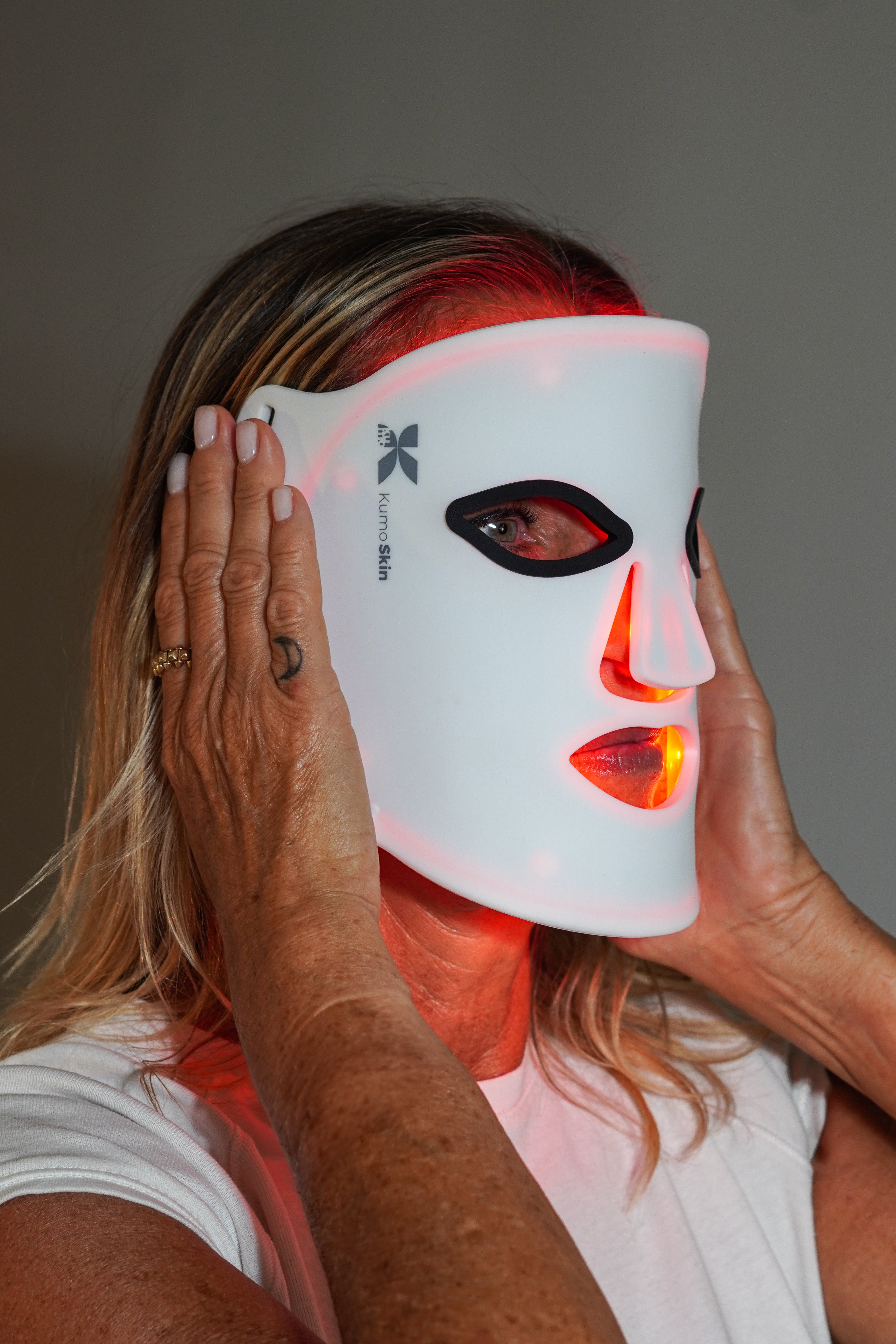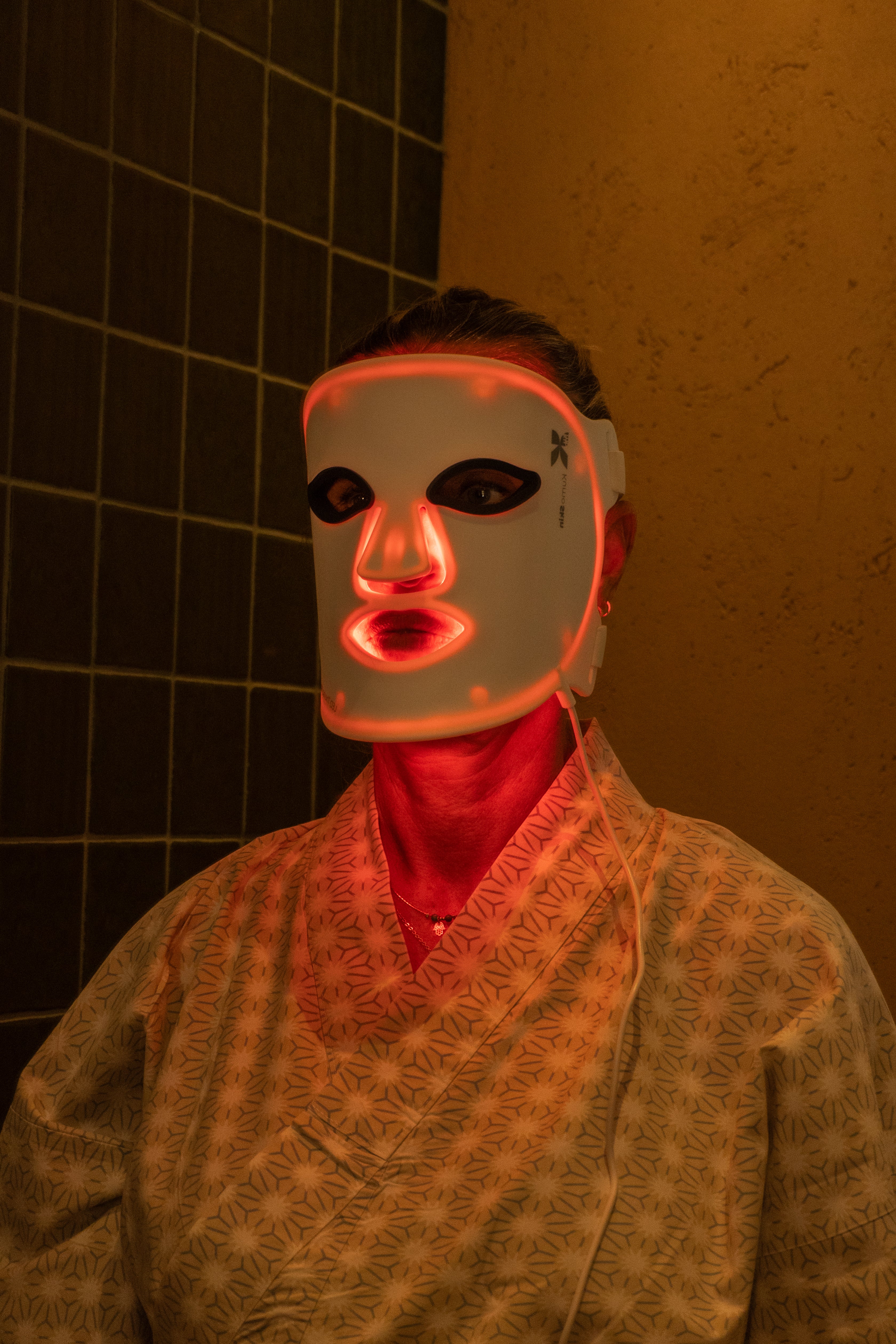LED facial mask to improve your skin at home safely and effectively.
If you're looking for a clear guide on what an LED light mask is, how it works, and how to get the most out of it, you've come to the right place. Here you'll find benefits for each skin type, updated scientific evidence, steps for use, and how to integrate it into an overall recovery routine.
Coming soon
- Reduces blemishes and redness, improves firmness and radiance without downtime.
- Key colors: blue (acne), red (anti-inflammatory and anti-aging), near infrared (deep regeneration).
- Progressive results in 4–8 weeks with consistent use; weekly maintenance.
- Safe for most skin types; protect your eyes and avoid use if you have photosensitivity.
- Complement your care with hydration, photoprotection, and recovery habits.
How LED light therapy works
Photobiomodulation uses specific wavelengths to stimulate the skin's natural processes. Red and near-infrared light activate mitochondria and increase ATP, promoting tissue repair; blue has an antibacterial effect on Cutibacterium acnes; amber/green can modulate pigmentation and soothe.
Consistency beats intensity: regular, moderate sessions are better than a single intense exposure.
- The energy (mW/cm²) and time determine the effective “dose.” Always follow the manufacturer's instructions.
- It is not UV light, nor does it produce a tan; its action is biochemical, not thermal.
Colors and Targets: A Quick Guide
Below is a short summary to guide your choice and combination of modes.
| Color | Approx. wavelength | Main action | Ideal for |
|---|---|---|---|
| Blue | 405–470 nm | Antibacterial, regulates sebum | Inflammatory acne, oily skin |
| Red | 620–660 nm | Anti-inflammatory, collagen | Fine lines, redness, repair |
| Near Infrared (NIR) | 800–850 nm | Deep regeneration | Elasticity, tissue recovery |
| Amber | 580–600 nm | Calm, even out | Sensitivity, dull tone |
| Green | 520–550 nm | Modulates melanin | Superficial stains (support) |
Benefits by skin type and objective
Acne and blemishes
The combination of blue and red helps reduce inflammatory lesions and post-breakout redness. Blue targets bacteria involved in acne, while red soothes and promotes skin repair. At home, it's typically used for 10–20 minutes per session, several days a week, adjusting to tolerance. Clinical evidence suggests moderate and safe improvements, especially as a complement to your routine with gentle cleansers and sunscreen. Consult your dermatologist if you use photosensitizing medications.
- More on light therapy and acne: Cochrane review (2016) pointing to benefits with variable quality of evidence ( Cochrane/PubMed ).
Anti-aging, firmness and luminosity
Red and NIR light stimulate collagen, improve microcirculation, and reduce inflammation. Dermatology studies have shown improvements in texture and fine wrinkles with consistent protocols over several weeks ( LLLT Review 2013, PubMed ). To maximize results, combine with peptides, niacinamide, and daily sunscreen. Avoid harsh exfoliations immediately before your session.
Stains and uneven tone
Green and amber can promote a more even skin tone over time, although the evidence is less robust than for red/blue. Use them as a complement to topical lighteners (e.g., tranexamic acid, vitamin C) and, above all, broad-spectrum sunscreen. For melasma or other hyperpigmentation, consistency and SPF are key.
Sensitive skin and redness
Low-intensity red light can help soothe and strengthen the skin barrier. Start with short durations and assess your tolerance. Avoid high temperatures on your face immediately before or afterward (hot showers, saunas) to avoid exacerbating sensitivity.
Well-being and global recovery
Light therapy can be integrated into a holistic approach to daily recovery and performance. In addition to facial care, technologies such as pressure therapy and massage devices help stimulate circulation and relax muscles, complementing your skin and sleep routine.
- Discover our LED light therapy collection for home care.
- Activates circulation and relieves legs with pressotherapy .
- Relax muscles with the massage gun KUMOPulse Air .
How to Use an LED Light Mask at Home
Recommended frequency and times
Start with 3–5 sessions per week, 10–20 minutes, for 4–8 weeks, then move to maintenance sessions 1–2 times per week. Adjust based on your skin's response and the specifications of your device. Results are typically gradual; consistency is key. The American Academy of Dermatology emphasizes that home devices are safe and require regular use to notice visible changes (AAD).
Preparation, routine and synergies
- Before: Gentle cleansing and dry skin. Avoid harsh acids/retinoids immediately before.
- During: Protect your eyes with the included safety glasses; do not look directly into the LEDs.
- After: Moisturize with soothing serums (e.g., hyaluronic acid) and seal with cream.
- Day to day: SPF 30+ sunscreen every day is essential to consolidate results.
Safety and contraindications
LED masks pose a low risk for most people. Avoid them if you have photosensitive epilepsy, active eye disease, open wounds, or are taking photosensitizing medications without medical supervision. Pregnancy and breastfeeding: Consult your doctor if you have any concerns. If irritation persists, discontinue use and consult a professional. General safety guidelines and realistic expectations at the Cleveland Clinic.
Scientific evidence: what the research says
- Anti-acne: Blue/red light shows reductions in inflammatory lesions; the quality of the evidence varies, with a need for more controlled studies (Cochrane 2016).
- Anti-aging: Red/NIR photobiomodulation has been shown to improve texture, elasticity, and fine wrinkles in small series and trials; well tolerated ( Review 2013, PubMed ).
- Safety: Home LED devices, when used as directed, are considered safe by dermatological societies; results are more subtle than in-office results but noticeable with continuous use (AAD).
If you're looking to integrate this technology into your recovery and performance lifestyle, explore the entire ecosystem at KUMO Balance .
Integrate the LED mask into your KUMO routine
A complete recovery strategy combines aesthetics, technology and habits:
- LED sessions for skin regeneration and calming.
- Pressotherapy to activate venous return and relieve heavy legs after training.
- Percussive massage to release tension and improve mobility.
- Sleep hygiene and red night light to optimize rest.
For personalized recommendations and support, contact us from the page customer service .
FAQ
How long does it take to see results with an LED facial mask?
With consistent use, many people notice subtle changes in 2–4 weeks and clearer results in 6–8 weeks. For acne, this typically shows less inflammation and redness; for anti-aging, it shows improvements in texture and radiance. The duration depends on regularity and the goal. Maintain 1–2 weekly sessions after the initial phase to consolidate the effects. Follow with gentle cleansing, moisturizing, and daily SPF to enhance and maintain results.
Does it work for adult hormonal acne?
It can help modulate inflammation and reduce associated bacteria, so it's a good support. However, hormonal acne often requires a multimodal approach (gentle hygiene, sebum control, possible topical/systemic therapy). Blue/red light can reduce breakouts and post-inflammation, but it doesn't regulate hormones on its own. If breakouts are persistent or deep, consult a dermatologist for a safe, comprehensive plan.
Is it compatible with retinoids, AHA/BHA and vitamin C?
Yes, but manage your timing. Avoid applying retinoids or harsh exfoliants just before your session to reduce the risk of irritation. You can use them at night every other day or after your session if your skin tolerates it. Vitamin C in the morning and LED later in the day can work well. Observe your skin's response and adjust the frequency and intensity. Always wear sunscreen daily.
Can I use it if I am pregnant or breastfeeding?
LED light is not UV and is considered low-risk; however, during pregnancy and breastfeeding, it's wise to consult your doctor before using any device. Avoid high wattages and start with short sessions to assess tolerance. If you have specific skin conditions (melasma, dermatitis), a professional can adjust expectations and recommend the safest protocol for you.
Does the LED mask replace in-office treatments?
No. It's an excellent at-home supplement that improves consistency and maintenance between professional sessions. Office-based devices are usually more powerful and customizable. For severe cases (nodulocystic acne, deep scars, resistant melasma), a combination with medical treatments is most effective. At home, maintain regularity and take care of your skin barrier to enhance any professional intervention.
To remember
- The LED light mask is safe, versatile, and effective as a complement to acne, anti-aging, and skin calming.
- Choose colors according to your objective: blue (acne), red/NIR (regeneration), amber/green (tonal support).
- Consistency > intensity: 3–5 times/week and regular maintenance.
- Protect your eyes, avoid unsupervised photosensitizers, and use SPF daily.
- Integrate phototherapy into a comprehensive recovery routine with KUMO technologies.
- Take the next step: explore the KUMO LED light therapy or find out more at KUMO Balance .
